
Filed under: children's illustration, poetry

“Scientific studies have shown that people generally find women’s voices more pleasing than men’s,” writes Brandon Griggs in his October 21, 2011 article for CNN (“Why computer voices are …
Hi folks, this is my February series on Golden Advice. I like to spend the month of February digging into the wisdom that has come my way, and that guides my art, my craft and my life. I find having some wise stuff in the soul helps me write stories with purpose. This week's thoughts are inspired by I Corinthians, Chapter 13, The Four Loves by C.S. Lewis, The 5 Love Languages by Gary Chapman, and a vast number of other books.
Hi folks, this is my February series on Golden Advice. I like to spend the month of February digging into the wisdom that has come my way, and that guides my art, my craft and my life. I find having some wise stuff in the soul helps me write stories with purpose.
I like to start with American poet Carl Sandburg. I always have this feeling that Carl is with me on my writing journey. His words whisper in the back of my heart. Something about his homespun writing gives me hope that I can be so much more. This week I'm going to respond to Carl Sandburg's broadcast in the 1950s called "My Fellow Worms."
Here's the first thing up. You grow older and you start getting a sense of what you really believe. This is the stuff that is tried and true. If you ask the question, "What do I believe?" and then answer it -- you end up writing a book or making a cute poster with a smart saying on it. Carl believed in "getting up in the morning with a serene mind and a heart holding many hopes." I am one the fellow worms. This little thought makes me want to put on some music and dance. Life is all about the small, tried and true things. I hope that you are waking up to this truth.
We are small in this universe. Tiny, tiny, tiny. Like Carl said about us: insignificant speck of animate star dust each of us is amid cotillions of billion-year constellations. When you realize this, it helps put perspective on all those hills you are trying to climb. In view of the universe, the towers of achievement that men proclaim just don't make a lot of sense. Note: I wrote a poem to bless my friends or I wrote a book that reached the planet -- not much difference in the scheme of things. Always keep things in perspective.
On December 10, 1956, ornithologist Chandler Robbins banded about 20 Laysan albatrosses on Midway Atoll. Today, one of those is considered the oldest known wild birds in the world. Presumed to be at least five years old, the minimum breeding age, Wisdom is now over 63 years old. She has incredibly survived yet another year in the wild and has returned to Midway Atoll to raise a new chick.
It’s known that sometimes Laysan albatrosses will take a year off of brooding, so the best guess is that Wisdom has a minimum of 35 chicks. But she’s continuously nested since 2008 without a year off, so it may be many more.
You can follow this unfolding story at the USFWS service Tumbler site.
Read about her exciting brush with death in this award winning children’s book.
| Buy Mims House Publisher site | ||
| Buy Hardcover | Buy Kobo | Buy Kindle |
| Buy Paperback | Buy iBook | Buy Nook |
| Available on Follett, MackinVIA, and other education distributors | ||
“It’s marvelous! I LOVE it! And I got a lump in my throat, tears! And I’m a biologist! Your book is beautiful, meaningful, simple, elegant………thank you for caring, thank you for sharing this story!”
Kim Rivera, National Seabird Coordinator, NOAA Fisheries, Deputy ARA, Protected Resources Division, Alaska Region
“Wisdom’s story makes my heart soar.”
Kirby Larson, author of Two Bobbies: A True Story of Hurricane Katrina, Friendship and Survival and Winner of the Newbery Honor for Hattie Big Sky.
“On December 10, 1956, early in my first visit to Midway, I banded 99 incubating Laysan Albatrosses in the ‘downtown’ area of Sand Island, Midway. Wisdom (band number 587-51945) is still alive, healthy, and incubating again in December 2011. While I have grown old and gray and get around only with the use of a cane, Wisdom still looks and acts just the same as on the day I banded her. . . remarkable true story. . . beautifully illustrated in color.”
Chandler S. Robbins, Sc.D, Senior Scientist (Retired), USGS Patuxent Wildlife Research Center, Laurel, MD.
Why are people afraid to get old? Research shows that having a bad attitude toward aging at a young age is only detrimental to the young person’s health and well-being in the long-run. Contrary to common wisdom, our sense of well-being actually increases with our age–often even in the presence of illness or disability. Mindy Greenstein, PhD, and Jimmie Holland, MD, debunk the myth that growing older is something to fear in their new book Lighter as We Go: Virtues, Character Strengths, and Aging. In the following videos, Dr. Greenstein and Dr. Holland are joined by Holland’s granddaughter Madeline in a thought-provoking discussion about their different perspectives on aging in correlation to well-being.
The Relationship between Wisdom and Age
The Bridge between Older People and Younger Generations
On Fluctuations in Well-Being throughout Life
The Vintage Readers Book Club
Headline image credit: Cloud Sky over Brest. Photo by Luca Lorenzi. CC BY-SA 3.0 via Wikimedia Commons
The post Intergenerational perspectives on psychology, aging, and well-being appeared first on OUPblog.
There is a pressing need to re-establish a cultural narrative for science. At present we lack a public understanding of the purpose of this deeply human endeavour to understand the natural world. In debate around scientific issues, and even in the education and presentation of science itself, we tend to overemphasise the most recent findings, and project a culture of expertise.
The cost is the alienation of many people from experiencing what the older word for science, “natural philosophy” describes: the love of wisdom of natural things. Science has forgotten its story, and we need to start retelling it.
To draw out the long narrative of science, there is no substitute for getting inside practice – science as the recreation of a model of the natural world in our minds. But I have also been impressed by the way scientists resonate with very old accounts nature-writing – such as some of the Biblical ancient wisdom tradition. To take a specific example of a theme that takes very old and very new forms, the approaches to randomness and chaos are being followed today in studies of granular media (such as the deceptively complex sandpiles) and chaotic systems.
These might be thought of as simplified approaches to ‘the earthquake’ and ‘the storm’, which appear in the achingly beautiful nature poetry of the Book of Job, an ancient text also much concerned with the unpredictable side of nature. I have often suggested to scientist-colleagues that they read the catalogue of nature-questions in Job 38-40, to be met with their delight and surprise. Job’s questioning of the chaotic and destructive world becomes, after a strenuous and questioning search in which he is shown the glories of the vast cosmos, a source of hope, and a type of wisdom that builds a mutually respectful relationship with nature.
Reading this old nature-wisdom through the experience of science today indicates a fresh way into other conflicted territory. For, rather than oppose theology and science, a path that follows a continuity of narrative history is driven instead to derive what a theology of science might bring to the cultural problems of science with which we began. In partnership with a science of theology, it recognises that both, to be self-consistent, must talk about the other. Neither in conflict, nor naively complementary, their stories are intimately entangled.

Cloud to ground lightning over Sofia, by Boby Dimitrov. CC-BY-SA-2.0 via Wikimedia Commons.
The strong motif that is the idea of science as the reconciliation of a broken human relationship with nature. Science has the potential to replace ignorance and fear of a world that can harm us and that we also can harm, by a relationship of understanding and care. The foolishness of thoughtless exploitation can be replaced by the wisdom of engagement. This is neither a ‘technical fix’, nor a ‘withdrawal from the wild’, two equally unworkable alternatives criticised recently by Bruno Latour in a discussion of environmentalism in the 21st century.
Latour’s hunch that rediscovered religious material might point the way to a practical alternative begins to look well-founded. Nor is such ‘narrative for science’ confined to the political level; it has personal, cultural and educational consequences too that might just meet Barzun’s missing sphere of contemplation.
Can science be performative? Could it even be therapeutic?
George Steiner once wrote, “Only art can go some way towards making accessible, towards waking into some measure of communicability, the sheer inhuman otherness of matter…”
Perhaps science can do that too.
Tom McLeish is Professor of Physics and Pro-Vice-Chancellor for Research at University of Durham, and a Fellow of the Institute of Physics, the Royal Society of Chemistry, the American Physical Society and the Royal Society. He is the author of Faith and Wisdom in Science.
Subscribe to the OUPblog via email or RSS.
Subscribe to only science articles on the OUPblog via email or RSS.
The post Faith and science in the natural world appeared first on OUPblog.
 " Saucy is a real character dealing with real stuff—hard stuff that doesn’t have easy answers, not in real life and not in fairy tales, either. This is a really compelling and ultimately hopeful story. Highly recommended."
– Debby Dahl Edwardson, National Book Award finalist and author of My Name is Not Easy
Read a sample chapter.
" Saucy is a real character dealing with real stuff—hard stuff that doesn’t have easy answers, not in real life and not in fairy tales, either. This is a really compelling and ultimately hopeful story. Highly recommended."
– Debby Dahl Edwardson, National Book Award finalist and author of My Name is Not Easy
Read a sample chapter.
When you sit in your home office and write, do you think about reaching kids around the world?
Neither do I.
Yet, I’ve been privileged to be published in eight languages: Swedish, Danish, Norwegian, German, Arabic, Chinese, Spanish and English.
My books have been read by children and adults across the globe. That’s an amazing thing.
 I just learned that Wisdom, the Midway Albatross will be on the 2014-15 Reading List for the Sakura Medal, which is a children’s book award given by the international schools in Japan. The award reaches 15,000 students on 25 schools.
I just learned that Wisdom, the Midway Albatross will be on the 2014-15 Reading List for the Sakura Medal, which is a children’s book award given by the international schools in Japan. The award reaches 15,000 students on 25 schools.

When WISDOM, THE MIDWAY ALBATROSS was published, I always hoped the book would find its way to Japan. While the story focuses on how the oldest bird in the world surviving the Japanese tsunami, the story is also about that March 11, 2011 earthquake and tsunami. From that tragic natural disaster have come many stories of courage and survival. I hoped that Wisdom’s longevity in the face of nature’s forces would be an inspiration. Maybe one day, there will be a version in Japanese.
Thank you, Sakura Medal for allowing us to share Wisdom’s story with a Japanese audience. And thanks for letting me share my good news.
Read more about Wisdom here.
Where have your books traveled? What languages are your books translated into? What language do you WISH to be translated into?
Our cat is fascinated with doors. If one is closed, she sits staring at it or dig under it until it is opened. She may not see the room within as worthy of a visit once she can enter, but she wants the opportunity nonetheless. For us bipeds, what is it about open doors that stirs our curiosity? Who can walk down a hall of doors where most are closed and not peek inside the ones ajar? A hotel, office, hospital – wherever we are, we must look! What do we expect to find inside?
Don’t tell me you walk on focused with your eyes straight forward. I won’t believe you. I know you slow your pace slightly to get as much of a look as possible as you approach. Isn’t it awkward when you turn your head as you are walking past and end up looking face to face with someone whose expression is always, “why is this person staring at me?”
Uhhh, you left the door open!
When you were a kid, did you think of doors as some sort of portal with endless possibilities? Every door was a wardrobe that could take you to Narnia. Bugs Bunny cemented that feeling with the recurrent theme of being chased down a hall by coming and going through random doors completely out of time and sequence. The heart-shaped monster was my favorite chaser.
I heard a commotion in our den and opened the door of our bedroom recently to investigate. It was not a magic portal, but I did learn a lesson. One should always make sure they are fully dressed when exploring what may be beyond closed doors. That became a door one daughter wishes had remained closed and a memory her visitor wishes he could erase.
As I see it, there are a number of potential doors.
The list goes on, but you get my point. Life is a series of one door after another. When one comes to a life door, he or she should decide on the best and worse case scenarios before passing under the threshold. Count the cost, as it were. I currently find myself standing in front of an open door and I have yet to decide how great the cost of entry. It seems attractive, but I find myself somewhat intimidated by its potential. What I lack is discernment about this particular door, thus all of my musing about doors in general. And so, I sit at the frame and pray, think, and wonder what could be inside. It is daunting, but I remember James 1:5
If any of you lacks wisdom, you should ask God, who gives generously to all without finding fault, and it will be given to you.
I need wisdom. Either that or a heart-shaped monster to chase me in or away.
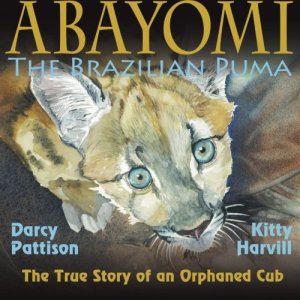 .
.
Abayomi, the Brazilian Puma: The True Story of an Orphaned Cub
by Darci Pattison & Kitty Harvill, illustrator
Mims House 2014
978-1-62944-001-9
Ages 6 to 8 32 pages
.
“From the award-winning team that brought you WISDOM, THE MIDWAY ALBATROSS, comes a new heart-warming story of an orphaned puma cub. A mother puma, an attempt to steal a chicken, and an angry chicken farmer—the search is on for orphaned cubs. Will the scientists be able to find the cubs before their time runs out?
In this “Biography in Text and Art,” Harvill takes original photos as references to create accurate wildlife illustrations. Pattison’s careful research, vetted by scientists in the field, brings to life this true story of an infant cub that must face a complicated world alone—and find a way to survive.”
Opening
“In the far south, in Brazil, a puma cub was born in the early spring month of October 2012.”
The Story
Brazil, once covered by deep forests, now houses more people in cities and villages. To keep their cars moving more sugar plantations took over much of the remaining forest. Pumas, and other wild animals, must live closer to man and find it more difficult to hunt for food. One night, a female puma spotted some chickens in a farmer’s barn. Their normal diet of armadillos, capybaras, and ring-tailed coatis were getting hard to find. The puma needed to feed her cub and the chickens were easy prey. But she fell victim to a farmer’s trap. Before wildlife officials could get to the farm and safely remove the puma, she died.
Alone, hungry, and no mother to help, her cub had to hunt, but would he know how? Wildlife officials followed the mother puma’s trail trying to find her cubs but came up empty. Twenty-three days after his mom left and never returned, dogs a mile away from home cornered the cub. Dehydration and starvation ravished the cub’s body, stealing the energy he needed to walk. He staggered from place to place. This time wild life officials safely caught the cub, naming him Abayomi, which means happy meeting in the Tupi-Guarni native language. Scientists did what was needed so this little guy could return to the wild. Were they successful?
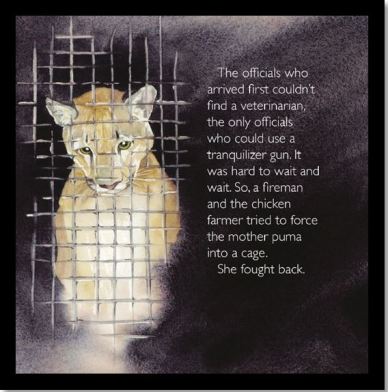
Review
The team of Darci Pattison and Kitty Harvill have made their second successful wildlife children’s book about a fascinating survivor. The first, Wisdom, the Midway Albatross, garnered starred reviews. Abayomi will undoubtedly do the same. With simple language and thoughtful prose, the story of Abayomi will come to life for schoolchildren, many of whom live in urban areas and have never seen a puma. Though the death of the mother puma was most likely gruesome, Pattison wrote,
“. . . She fought back. Once, she hit her head hard against the side of the cage and was dazed. After hours of struggling, she died.”
The illustrations were just as easy on the subject. You see the puma in a cage and some chickens in a roost, but nothing more. Not one spittle of blood mentioned or seen. Children should not experience nightmares after reading Abayomi. All of the illustrations are soft watercolor renditions of actual locations in this true story, completely vetted by experts. Each image is realistic yet gentle on the eyes. The scrawny cub, shown from the backside, does not noticeably display starvation. The hips are noticeably larger due to a lack of abdominal body fat, yet not so much as to scare even the youngest children.
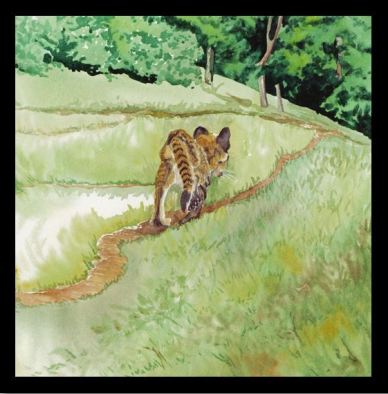
The book concludes with some facts about Abayomi, the Corridor Projects, and urbanization, along with some resources children can look up for more details. Children could write an interesting book report after reading Abayomi the Brazilian Puma. Pattison and Harvill make a splendid team that children, parents, and teachers should not ignore. Conservation and wildlife experts and scientists fact check Pattison’s research. Harvill uses photographs taken on site when painting her illustrations. The pair have made clear choices that make the books assessable to younger children, while still interesting older kids. (Yes, like myself.)
As with Wisdom, the Midway Albatross, Abayomi, the Brazilian Puma should be in school libraries and homeschooling bookshelves that cover wildlife, conservation, or the changing world. As starting points, Abayomi and Wisdom, are great resources for children. While not an expansive missive, these two books will guide students to other resources and further knowledge. The two books also allow younger children to learn about these subjects in a mild, non-scary manner that will peak curiosity, not provoke nightmares.

ABAYOMI, THE BRAZILIAN PUMA: THE TRUE STORY OF AN ORPHANED CUB. Text copyright © 2014 by Darci Pattison. Illustrations copyright © 2014 by Kitty Harvill. Reproduced by permission of the publisher, Mims House, Little Rock, AK.
.
Learn more about Abayomi, the Brazilian Puma HERE.
Get your copy of Abayomi, the Brazilian Puma at Amazon—B&N—Mims House—ask for it at your local bookstore.
.
Meet the author, Darci Pattison, at her website: http://www.darcypattison.com/
Meet the illustrator, Kitty Harvill, at her website: http://www.kharvillarte.com.br/artist.html
Find more Mims House stories at the publisher’s website: http://mimshouse.com/
.
Also by Darci Pattison

Saucy and Bubba, a Hansel and Gretel Tale

Vagabonds
.
.
.
.
.
.Also by Kitty Harvill
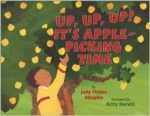
Up, Up, Up! It’s Apple-Picking Time
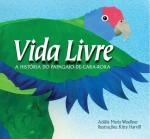
Vida Livre (published in Brazil)
.
.
.
.
.
Also New from Mims House

The Girl, the Gypsy, and the Gargoyle
.
.

This collection of pithy tales is multi-layered. The stories linger in the mind the way a good poem resonates. They are ancient Chinese fables Shiho S. Nunes has expanded into longer tales.
Add a CommentWithout saying quite as much in the cartoon, the continuous snowfall is getting ridiculous! In a slight twist to this African proverb/oft quoted running inspiration, the gazelle and lion can be truly thankful that running from/after each other is their primary concern.
Wisdom, the oldest known bird in the world at age 63, has just seen her newest chick hatch! Wow!
One of the surprising things about writing a nonfiction piece is that the story isn’t finished yet. Our world doesn’t just stop, it’s not stagnate. Life goes on. And that means that Wisdom has yet another chick.
Laysan albatrosses are known to take a year off now and then, usually at 4-5 year intervals. Wisdom has continuously hatched a chick since 2008, so she’ overdue for a sabbatical. This year, I was worried that she might not return and that could mean she was taking a break; or, it could mean that she died somewhere, lost at sea. Instead, Wisdom is breaking all records and teaching scientists so much about the life of an albatross. Before Wisdom–banded since 1956–scientist believed that Laysan albatrosses lived to be about 25 years old. We still don’t know if her life is an aberration or the norm. Scientists have banded Wisdom’s chicks for the last few years to follow the life of her chicks. They could fall prey to predators, storms, pollution or fishing. Or, they could live as long as Wisdom, or longer. This story is far from over. And that makes it even more exciting to me than when Wisdom first captured my attention. When will her story end? No one knows. Cool!
Cornell Bird Lab maintains a web-cam of a Laysan albatross nest on Kauai, Hawaii. Watch it here.
READ Wisdom’s remarkable biography here.
In the space of a week, I’ve gone from the heights to the depths.
Last week, I was thrilled to learn that my book, Wisdom, the Midway Albatross was given a starred review in Publisher’s Weekly. This book has defied all the odds–just as Wisdom has done.
“. . .Pattison writes crisply and evocatively, and her closing notes provide a wealth of information and resources for readers interested in Wisdom and her fellow albatrosses.” Publisher’s Weekly 2/18/13
The story is about a 60+ year-old albatross who lives on Midway Island and survived the Japanese tsunami. For over 60 years, she has soared over the North Pacific, only coming to shore to breed. Scientists estimate that she has hatched over 35 chicks, including one each year for the last five years. Last year’s chick was named Wonder and this year’s chick–just a couple weeks old now–was named Mana’olana, Hawaiian for Hope. Yes, a 62-year-old bird just hatched a new chick!
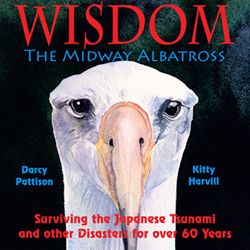 After the 2011 Japanese tsunami, I heard her story of survival and within six weeks, I had contacted scientists, researched her life and times and written her story. I contacted about twenty publishers and none would publish it. I decided to work with my long-time friend, wildlife artist Kitty Harvill to publish it from my own imprint, Mims House. Now, I’ve been in this business long enough to know that it would be a long hard road. But it was an important story, one I couldn’t let go.
After the 2011 Japanese tsunami, I heard her story of survival and within six weeks, I had contacted scientists, researched her life and times and written her story. I contacted about twenty publishers and none would publish it. I decided to work with my long-time friend, wildlife artist Kitty Harvill to publish it from my own imprint, Mims House. Now, I’ve been in this business long enough to know that it would be a long hard road. But it was an important story, one I couldn’t let go.
It won the Children’s Book category of the 20th annual Writer’s Digest Self-Published award, a $1000 cash prize. So, I submitted it to Publisher’s Weekly for review and it earned a Starred Review! Right now, it is an Amazon bestseller (for the spring season, the ebook version is only $0.99).
The starred review was especially nice, because it was a validation of all the work we had put into the book. Go look for yourself: self-published can be quality.
Publishing has weird math. 9 months + 5 revisions = NO.
The rejection I got yesterday was shocking and painful.
For nine months, I have been working with someone on a project and it has developed in amazing ways. The critiques were spot-on and I revised like crazy. I deleted chapters, added chapters, rearranged chapters, deepened characters, searched for ways to add humor. Then, I did it again: I added a character, took out a subplot, deepened characters and searched yet again for ways to add humor. I expanded the climax scene, set it up better. I created a stronger emotional arc, added a stronger villain. I revised.
I love this story now.
It was rejected.
The world tilted for me yesterday.
Nine months. Three major (huge, gigantic, difficult, rewarding) revision and a couple more minor ones.
No.
Yet, the moon rose as usual, I slept.
The sun rose as usual, I got up and showered and ate breakfast.
I have already queried someone else and will send it to them today.
I am raw. I feel wounded. A trust betrayed. A grieving because they couldn’t see the story in front of them; they only saw what they would have written, if only they were writers.
Are they right? Are they wrong?
I don’t know.
I only know that this is a heartbreaking week, but last week was an uplifting week. This is just the heights and the depths of our profession; somehow, it feels normal. And regardless of the reaction of others to what I write, my job is to plod along putting one word after another.
So, today, I will write.
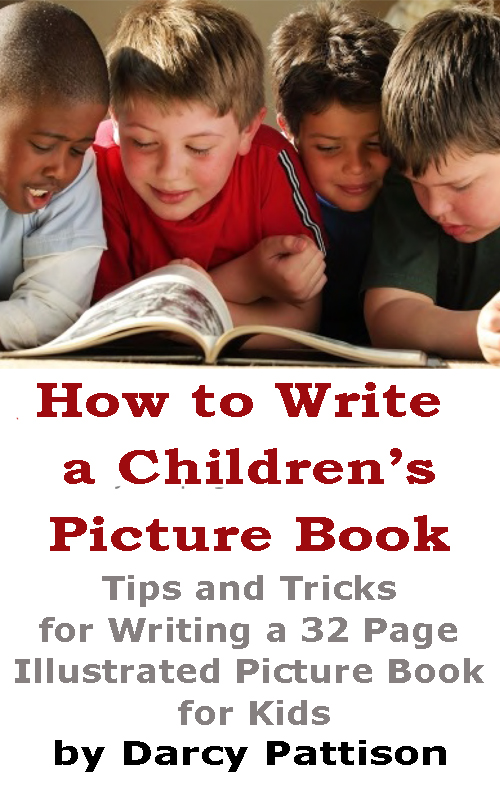 |
Last year, I wrote this book about the oldest bird in the world who was on Midway Atoll when the Japanese tsunami struck. It’s an amazing story of survival that just won’t stop. At the age of 62+, she is about to hatch another chick. Yes! A mother at 62+
From Wisdom, the Midway Albatross’s Facebook Page comes this exciting news:
Thanks to a dedicated Facebook friend of mine, were are going to have a contest this year to name my soon to born chick!
** And this year, I am sincerely hoping that the USFWS_Pacific Region and The Papahānaumokuākea Marine National Monument will work with me on this endeavor **
Here is how it will work:
- Once the winning name is selected, a $500 DONATION will be made on behalf of my newborn AND the name of the person who comes up with my newborn’s name — which me and my crazy beautiful partner will select. (Unless the person selected chooses not to have their included)
Regarding the donation:
- The $500 donation will go directly to Friends of Midway Atoll NWR a non-profit organization
AND … wait for it …
- My dedicated Facebook friend will also make 2 additional donations directly to:
- the Kure Atoll Conservancy, AND
- an organization (yet to be named) which supports TERN ISLAND in French Frigate Shoals, Hawaiian Islands National Wildlife Refuge
Note: On DEC-16-2012, a freakish weather event (possibly a tornado) struck the camp at Tern Island, causing extensive damage to the facilities at this needed camp. Fortunately, the one intrepid employee and four tenacious volunteers were unharmed!
** the fun part is this: we won’t know the actual amount of these 2 additional donations until the name is selected!
This naming contest is open to everyone; and leave your name choice as a comment on Wisdom’s Facebook page.
If you can’t see this video, click here.
Did you know that albatrosses have an 8-foot wing span? In this video, shot at the 2012 Audubon Summer Camp, kids compare their arm span to Wisdom’s wing span.
If you can’t see this video, click here.
Teacher resources:
Wisdom, the Midway Albatross, the subject of my 2012 picture book has returned to Midway Island and laid a new egg. She was banded by Chandler Robbins on December 10, 1956 while sitting on an egg and presumed to be a minimum of five years old. That makes her at least 62 years old–and she’s going to be a new momma. Wow!

Wisdom and her mate prepare to begin their first shift of incubation, Photo credit: Pete Leary, USFWS
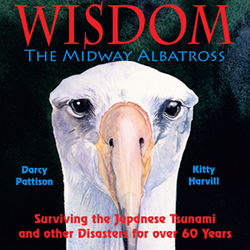

Read more about alternate publishing. Read more about how to write a children’s picture book.
"How can we help non-Christians understand that being a Christian doesn't mean living up to a standard of goodness, but rather means trusting a good God to do for us what we can't do for ourselves? As writers we have a unique opportunity to tell the world what it's all about. In our stories and in our characters, we can show what it really means to be a follower of Christ, and that means
"Under his watchful eye, a tiny sprout grows to a lovely, fragrant flower, the drab cocoon brings forth the beautiful butterfly, and the Babe in the manger becomes the Prince of Peace! These miracles bring wonderment and awe to our hearts, warming our souls like rays of sun on a spring morning, reminding us of an eternal truth--that all things are precious in his sight." (from
http://booklistonline.com/ProductInfo.aspx?pid=5394850
http://www.guestsgallery.com/vote/view.php?uid=45
 |
The oldest wild bird in the world, documented with banding, is Wisdom, the Midway Albatross. When the Japanese Tsunami hit on March 11, 2011, her nest was in the path of danger. This is her amazing story of survival of manmade and natural disasters for over 60 years.
At 60+ years old, she’s still laying eggs and hatching chicks. Among the birds of the world, this albatross, its ecology and life are amazing. It’s a story of survival and hope amidst the difficulties of life.
We wish to thank the following photographers for their amazing photos, the basis for much of our artwork. Thank you for making this book possible.
Wildlife artist, @KITTYHARVILL is offering a series of b/w, printable creative coloring pages for students to participate in Draw a Bird Day (dabday.org) on or about April 8. As the artist for Wisdom, the Midway Albatross: Surviving the Japanese Tsunami and Other Disasters for over 60 Years, Harvill is well-versed in bird art. The three creative coloring pages include a set-up for students:
The Draw a Bird Day (http://www.dabday.com/) was created to honor the memory of Dorie Cooper. During World War II, she cheered up soldiers by encouraging them to draw birds. Soon the walls of the sick ward was covered with bird pictures. When ten-year old Dorie died in 1946, her coffin was covered with drawings from soldiers, nurses and doctors. To remember her life and inspiration, Draw A Bird Day asks people to simply draw a bird and share it with someone on April 8.
Because April 8 falls on Easter this year, we are encouraging parents and teachers to do the Draw a Bird activities the week before or after.
To participate, download the creative coloring pages and use them to draw birds with kids.
To share, post pictures online, then email the location to [email protected]. We will PIN all submissions to the Draw a Bird Day: April 8, 2012 Board at http://pinterest.com/darcypattison/draw-a-bird-day-april-8-2012/
To Join in the fun, you can see more here:
 |
|
Great post and insight Mark. May God’s wisdom guide you safely.
Thank you Levi, decisions are hard. Looking to the one who already knows the answer.
Great! You know He won’t lead you astray. Have a great day.
i can’t begin to tell you what to do with this door looming in front of you. all i can do is tell you what i would do. if i felt that what i would find once i opened the door and walked through or looked in, was a positive, with the potential to bring good to my and my loved ones lives in some way, i would open it without fear or a second thought. if something was holding me back from taking this step, i would follow my instinct not to enter and move on past this door.
It “looks” positive, but I’m afraid of strings. Will find out more soon and definitely follow my instincts. Thanks, Beth…and I’m sorry about your Mud Hens.
My husband is not a fan of closed doors either, but learned a valuable lesson in the need for them a few years back. I think being a parent and balancing the need to know with our children’s need for some privacy is a big challenge and requires great wisdom, and a healthy respect for those children. I realized how much I missed my oldest son when he moved to Phoenix when his room was empty and the door was open all the time. The house was so much bigger without him in it.
Boy! The last three years…an email I started to delete and should have!
I’m about to learn that lessons, and not ready for it.
Yikes. Hard lessons!
Lol, whatever door you open, make sure you’re dressed for it :D